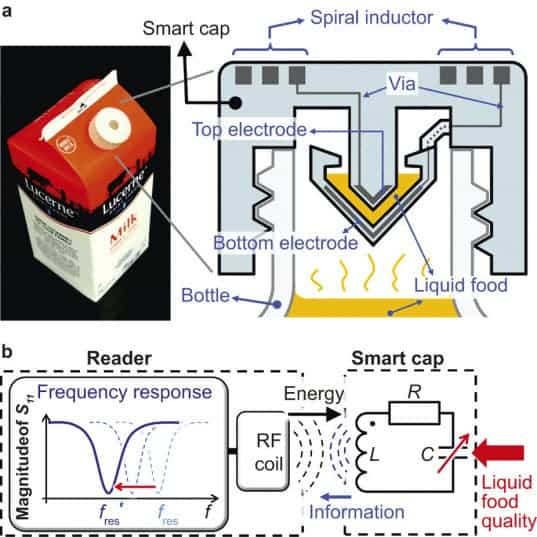A new study published in Nature describes the creation of a new sensor which will allow us to know when our liquid food has gone bad – and it may not be long until we can all 3D print bottle caps with these sensors at home.

UC Berkeley engineers, in collaboration with colleagues at Taiwan’s National Chiao Tung University, are taking 3D printing one step further, to include electronic sensors. For their first application, they’ve developed a smart cap for milk that lets users know when the milk is no longer good for consumption.
“Our paper describes the first demonstration of 3D printing for working basic electrical components, as well as a working wireless sensor,” said senior author Liwei Lin, a professor of mechanical engineering and co-director of the Berkeley Sensor and Actuator Center. “One day, people may simply download 3D-printing files from the Internet with customized shapes and colors and print out useful devices at home.”
The electrical circuit can in turn detect changes in levels of bacteria in the milk – all you have to do is turn the container upside down to make sure the liquid comes in contact with the cap. The way this sensor is designed, you could apply it to all liquid foods. It could even warn users that the food is nearing its expiration date – it may usher in what some would call “smart food”.
“This 3D-printing technology could eventually make electronic circuits cheap enough to be added to packaging to provide food safety alerts for consumers… You could imagine a scenario where you can use your cellphone to check the freshness of food while it’s still on the store shelves.”
Journal Reference: Sung-Yueh Wu, Chen Yang, Wensyang Hsu & Liwei Lin. 3D-printed microelectronics for integrated circuitry and passive wireless sensors. doi:10.1038/micronano.2015.13


